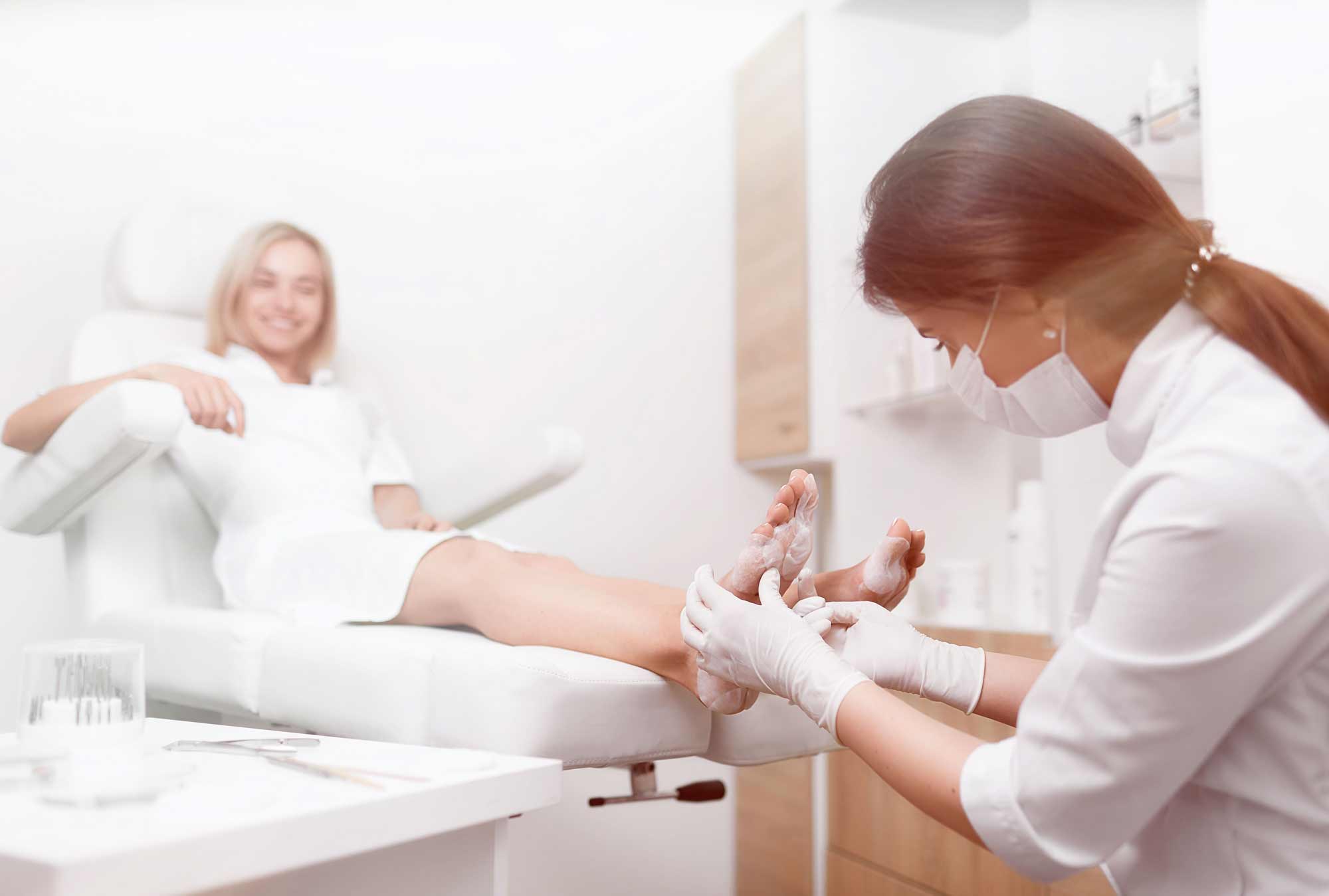0
Je hebt 0 artikelen in je winkelwagen
The causative agents of Onychomycosis are Dermatophytes
and non-Dermatophytes (NDMs). The term Tinea Unguium is used for Onychomycosis caused by Dermatophytes; however, Tinea Unguium and Onychomycosis are often considered synonymous.
So generally, Onychomycosis is used for all fungal nails caused by both Dermatophytes or NDMs.(1,3)
Research shows (3) that most with a percentage of 91% of fungal nails are caused by Dermatophytes, while Non-dermatophytes cause about 9% of all Onychomycosis worldwide. In Europe, this percentage even rises to 94%.

Dermatophytes are the most common fungi in humans.(1, 3) They are filamentous fungi that can break down keratin and use it as a feeding medium. One finds them worldwide. Dermatophytes can be divided into the following three genera: Trichophyton, Epidermophyton and Microsporum.
The most common species in toenails
are Trichophyton Rubrum (70%) and Trichophyton Mentagrophytes (20%). The genus Epidermophyton contains only one species: E. floccosum (5%).
Non-dermatophyte Onychomycosis (NDO) is caused by hyaline and dematiaceous, filamentous fungi commonly found as saprophytes or plant pathogens (plants and food). Unlike Dermatophytes, they generally do not live on keratin. They live on the unkeratinised intercellular cement of the host tissue and must benefit from previous keratin destruction by Dermatophytes, trauma or other nail disease. For this reason, they are sometimes considered secondary invaders of the nail plate.
Research shows that the majority is caused by Dermatophytes, while yeasts and NDMs cause about 9% of all Onychomycosis worldwide.(3)
Research shows that in countries such as Iran and Colombia, NDMs are slightly more likely to be the causative agent of nail fungus, though.(6)
The FungiCheck test strip is limited to testing fungal nails caused by Dermatophytes in the nails because they nestle from the outside and are thus located directly in the nail. (4, 7)
1 Boni E. Elewski* Onychomycosis: Pathogenesis, Diagnosis, and Management - Clin Microbiol Rev. 1998 Jul; 11(3): 415-429.
2 Tsunemi Y, Takehara K, Oe M, Sanada H, Kawashima M. Diagnostic accuracy of tinea unguium based on clinical observation. The Journal of Dermatology. 2015;42(2):221-2.
3 Onychomycosis: A Review_J Fungi (Basel). 2015 Jun; 1(1): 30-43.Published online 2015 Mar 27. doi: 10.3390/jof1010030
4 J Dermatol. 2016 Dec;43(12):1417-1423. doi: 10.1111/1346-8138.13348. Epub 2016 Mar 19.Clinical study of Dermatophyte Test Strip, an immunochromatographic method, to detect tinea unguium dermatophytes.
5 Evaluation of clinicomycological aspects of onychomycosis_ Indian J Dermatol. 2008; 53(4): 174-178. doi: 10.4103/0019-5154.44788
6 Jundishapur J Microbiol. 2016 Jul 26;9(8):e40543. eCollection 2016 Aug. Screening for tinea unguium by Dermatophyte Test Strip*
7 Y. Tsunemi,1 K. Takehara,2 Y. Miura,2 G. Nakagami,2 H. Sanada2 and M. Kawashima1
8 Monica A. Lawry, MD; Eckart Haneke, MD, PhD; Katherine Strobeck, MD; et al - Methods for Diagnosing Onychomycosis. Arch Dermatol. 2000;136(9):1112-1116. doi:10.1001/archderm.136.9.1112

If you are unable to come to one of our product training sessions, do not hesitate to contact us for appropriate advice.